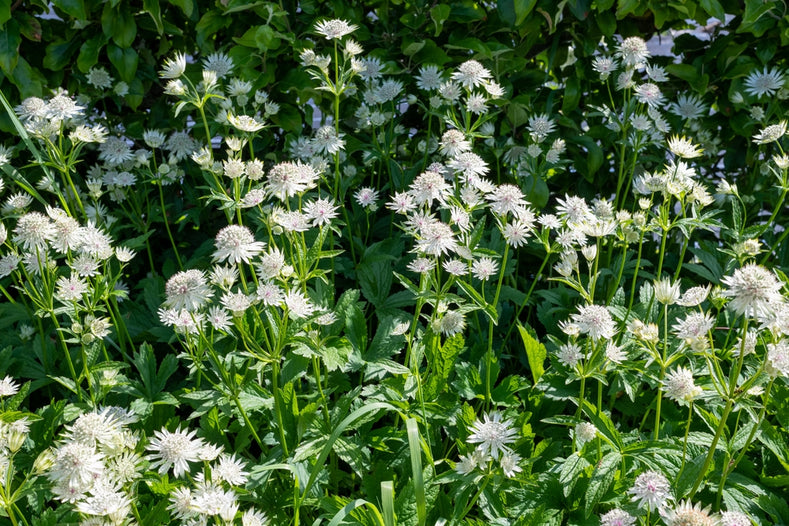Reliable, resilient, and returning every year, bare root perennials bring quintessential cottage-garden charm. Their increasing impact each season offers a rewarding gardening investment, ensuring joy for years to come.
Why Choose Bare Root Perennials?
For those desiring quicker results than seeds yet find nursery-potted plants costly, bare root perennials are the best alternative. These hardy plants are straightforward to grow, requiring no special protection. Acclimatising to your garden from the start, they often establish more swiftly.

Growing Bare Root Perennials
While hardy perennials are resilient, initial nurture enhances their health and quick establishment. Though direct planting into borders is possible, it's advisable to start them in temporary pots to avoid disturbances or competition. Once they’ve grown for a few months, transplant them to their final location.
Quick Guide:
- Soak the roots in water for 3-6 hours before planting.
- Plant your bare roots into temporary pots using multipurpose compost in spring, growing them in a sheltered outdoor spot.
- Choose pots that fit the bare roots comfortably.
- For perennials with a noticeable crown, ensure it's just below the soil surface.
- Some varieties are root lengths; plant these lengthways and shallowly (1-2 cm).
- Transplant to borders or permanent containers in late spring or early summer.
- After planting, water thoroughly and maintain hydration during growth.
Growing Perennials in Pots
Many perennials thrive in pots, delivering a low-maintenance display annually. For taller varieties, opt for large, sturdy pots. Utilise soil-based compost or garden soil for a long-lasting, robust substrate.
Caring for Perennials
The charm of hardy perennials lies in their low maintenance. Some might need staking or support; others flourish with periodic deadheading. Post-flowering, trim stems close to ground level. Their hardiness allows them to weather winter without added protection, promising fresh growth come spring.
Relocating and Dividing Perennials
Ensure you’re aware of a plant’s preferred conditions. If a perennial doesn’t thrive, consider relocating it. Many hardy perennials form clumps over time, which can be divided and replanted for healthier growth and additional plants.
Planning a Perennial Scheme
When designing with perennials, consider plant heights, habits, colours, and blooming periods. Position taller species at the back and compact ones at the front. For impactful visuals, plant in groups and ensure colour distribution.
Perennials are a gardener’s delight, thriving in various conditions and offering annual beauty. Whether in borders or pots, these hardy plants assure easy care, aesthetic appeal, and attraction for pollinators. Embrace the perennial charm for a vibrant garden year after year.


